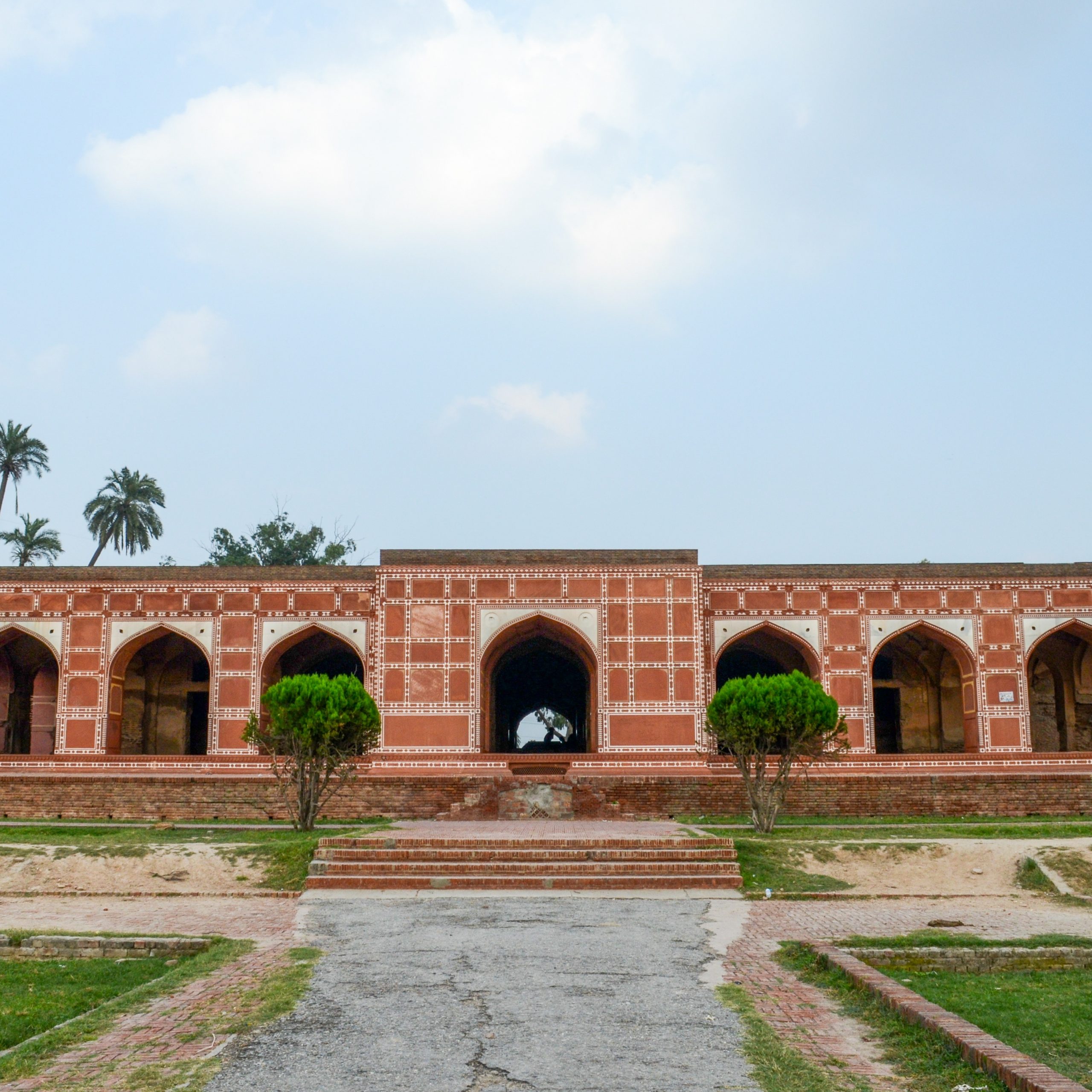Empress Noor Jahan’s Tomb is located in the Shahdra Bagh in Lahore, across Ravi River, just separated by a train track from that of her husband’s and her brother’s tombs. She was the beloved wife of the Mughal Emperor Jahangir and most popular queen of Mughal period. She died in 1645 and was buried in the tomb she built for herself during her lifetime. Empress Noor Jahan’s tomb is located near Emperor Jahangir’s Tomb.
About the Empress
Her original name was Maher-un-Nisa and Noor Jahan was the title given to her which literally mean “light of the world”. She was the daughter of Mirza Gayas Baig, a noble from Iran, and was the beloved queen of Emperor Jahangir from 1569 to 1627. She died in 1645 at the age of 72 years and outlived Jahangir by 18 years. Queen Noor Jahan was the most powerful empress in the history of Mughal dynasty and was the only empress to have her name appeared on the coinage of her period.
The mausoleum of Empress Noor Jahan was built in her lifetime and was completed in a period of four years at a cost of Rs. 0.3 million of the time. However, like other Mughal era monuments in Lahore, Noor Jahan’s tomb was also plundered during the Sikh era in the 18th century and the beautiful marble was removed to use in the Golden Temple in Amritsar, India.
Architecture
Noor Jahan’s tomb was built on an elevated podium, in the takhtgah (throne) style. The platform making the base of the square mausoleum measuring 158 square feet, has the tomb in the shape of a square and measures 124 feet on each side and 19.6 feet high. There might be minarets previously have risen from the corners of the mausoleum, similar to the nearby Jahangir’s tomb but currently missing.
Exterior
Noor Jahan’s tomb is constructed using the red sandstone with flat roofing bordered with white marble grill similar to that of Jahangir’s tomb. It has 7 vaulted arches to each side covered with marble and fashioned with flower mosaics in semi-precious stone. The inner floor is covered with marble and outer platform with sandstone. The red sandstone was inlaid with floral motifs in addition to white, black and yellow marble. The central arch on each side protrudes out from the six flanking vaulted arches on its sides. The intricate patterns of the panelling and honeycomb shaped cornices in its several rooms surrounding the crypt.
Interior
The central vaulted chamber of the tomb contains a marble platform with two cenotaphs put together – one that of Nur Jahan and the other of her daughter, Ladli Begum. It was built by Hakim Ajmal, Khan of Delhi in 1912, the original marble sarcophagus bears ornate workmanship and the name of Allah, in the same style and size as seen in the tombs of Jahangir and Asif Khan. On her tomb is inscribed an epitaph: “On the grave of this poor stranger, let there be neither lamp nor rose. Let neither butterfly’s wing burn nor nightingale sing“. The original tombs are underneath and accessible by a narrow entrance just outside of the mausoleum. The narrow room is dark and has two small openings to allow sun during sunrise and sunset as Noor Jahan was said to have a fear of darkness.
Gardens
The tomb stands in the centre of a Persian-style Chahar Bagh. The original garden no longer survives, but once included tulips, roses, and jasmine. It is under renovation currently on a 5-year project and hopefully will gain its past glory.




Comment (0)